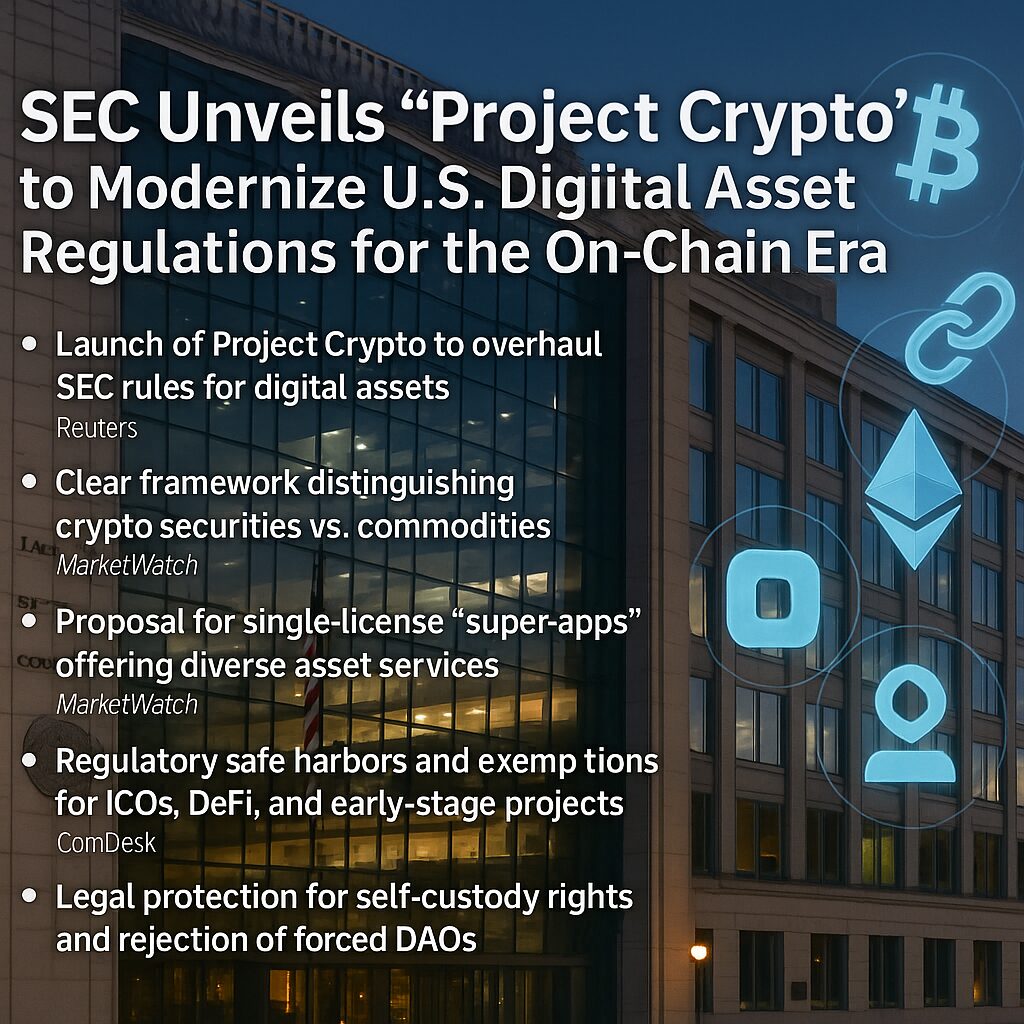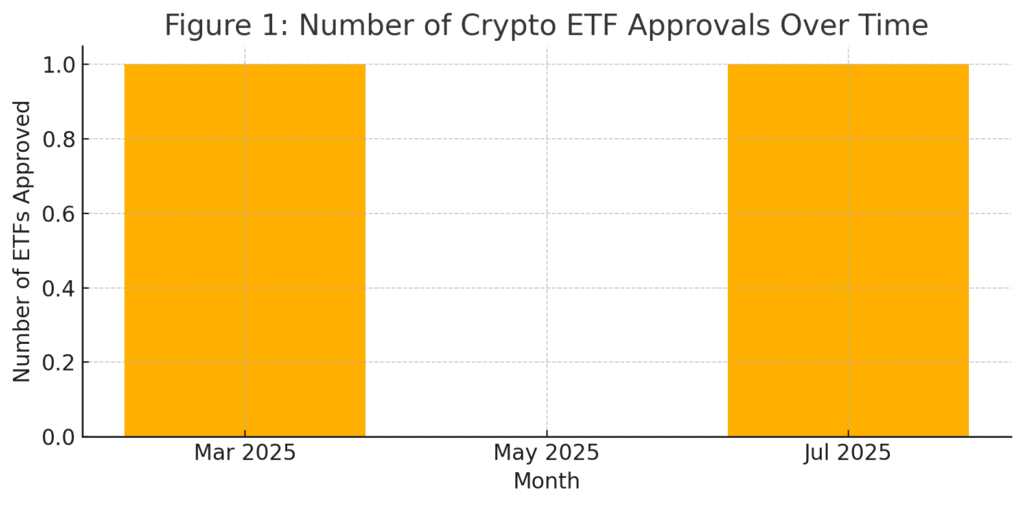
Main Points:
- Launch of Project Crypto to overhaul SEC rules for digital assets
- Clear framework distinguishing crypto securities vs. commodities
- Proposal for single-license “super-apps” offering diverse asset services
- Regulatory safe harbors and exemptions for ICOs, DeFi, and early-stage projects
- Legal protection for self-custody rights and rejection of forced DAOs
Introduction: Embracing the Digital Finance Revolution
In a landmark move on July 31, 2025, SEC Chairman Paul S. Atkins launched Project Crypto, a comprehensive initiative aimed at modernizing the agency’s rulebook for the digital asset age. Responding directly to the White House’s President’s Working Group report, Atkins framed this as a generational opportunity to align U.S. markets with on-chain technologies, bolster innovation, and maintain America’s leadership in global financial markets.
Genesis of Project Crypto
Project Crypto was conceived in direct response to the July 2025 White House report “Enhancing U.S. Leadership in Digital Finance,” which recommended clearer market structures, interagency coordination, and tailored stablecoin and DeFi policies. Building on that foundation, the SEC and the CFTC will jointly oversee spot crypto markets, with the CFTC granted sole authority over physical-commodity tokens, clarifying a long-standing jurisdictional gray area.
Defining Crypto Assets: Securities vs. Commodities
A cornerstone of Project Crypto is a bright-line framework separating investment contracts (securities) from commodities. Atkins emphasized that most tokens do not meet the securities test, shifting away from the prior enforcement-by-enforcement approach. This clarity will reduce legal uncertainty and foster capital formation for new projects.
Licensing Reforms: The “Super-App” Concept
To streamline market entry, Atkins proposed allowing registered broker-dealers to operate multi-asset “super-apps” under a single license. This means platforms could offer trading, staking, lending, and tokenized securities without navigating multiple regulatory regimes. Industry experts predict this change could lower costs and accelerate product innovation.
Fostering Innovation: Safe Harbors & Exemptions
Project Crypto calls for temporary exemptions and grace periods for early-stage token issuers, ICOs, and decentralized software projects. By shielding innovators from immediate enforcement risks, the SEC aims to encourage experimentation in DeFi and Web3 applications without compromising investor protections.
Protecting Self-Custody Rights
Atkins stated that self-custody—the right of individuals to hold private keys—must be legally protected. He rejected any requirement forcing developers to form DAOs merely to evade regulation, underscoring that true decentralization should not be a regulatory checkbox but a genuine technological ethos.
From Enforcement to Rulemaking
Since taking the helm, Atkins has reversed the “regulation by enforcement” tactics of previous leadership. In May 2025, the SEC clarified that PoS staking rewards constitute payment for services—not securities offerings—removing a major legal ambiguity for validators and node operators. In late July, the SEC approved in-kind creations/redemptions for crypto ETPs—enhancing efficiency for institutional investors.
Recent Legislative & Global Trends
Beyond the SEC, Congress is advancing the GENIUS Act (stablecoin framework) and CLARITY Act (token classification), reflecting broader momentum to codify crypto rules at the federal level. Meanwhile, Europe’s MiCA regulations went live in June 2025, positioning the EU as a competitive hub. The U.S. is now racing to match these global counterparts in regulatory certainty and market infrastructure.
Market Reaction and Outlook
Markets responded positively: major exchanges’ shares ticked higher, and trading volumes in spot Bitcoin and Ethereum climbed by 12% and 9% respectively in the week following the announcement. Crypto-native venture funds reported an uptick in deal flow, while legacy financial institutions expressed renewed interest in tokenization projects. Institutional investors, particularly ETF issuers, are now lining up new applications under the updated framework.Insert Figure
Place here: Immediately after the “Market Reaction and Outlook” section.
Figure 1: Number of Crypto ETF Approvals Over Time

Conclusion
Project Crypto marks a bold shift in U.S. digital asset policy—from reactive enforcement toward proactive rulemaking. By clarifying asset classifications, streamlining licensing, protecting self-custody, and fostering innovation through safe harbors, the SEC under Atkins aims to secure America’s competitive edge in the evolving digital finance landscape. As legislative complements like the GENIUS and CLARITY Acts progress, stakeholders—from venture investors to retail users—can anticipate a more predictable, integrated market where blockchain’s practical applications flourish.

